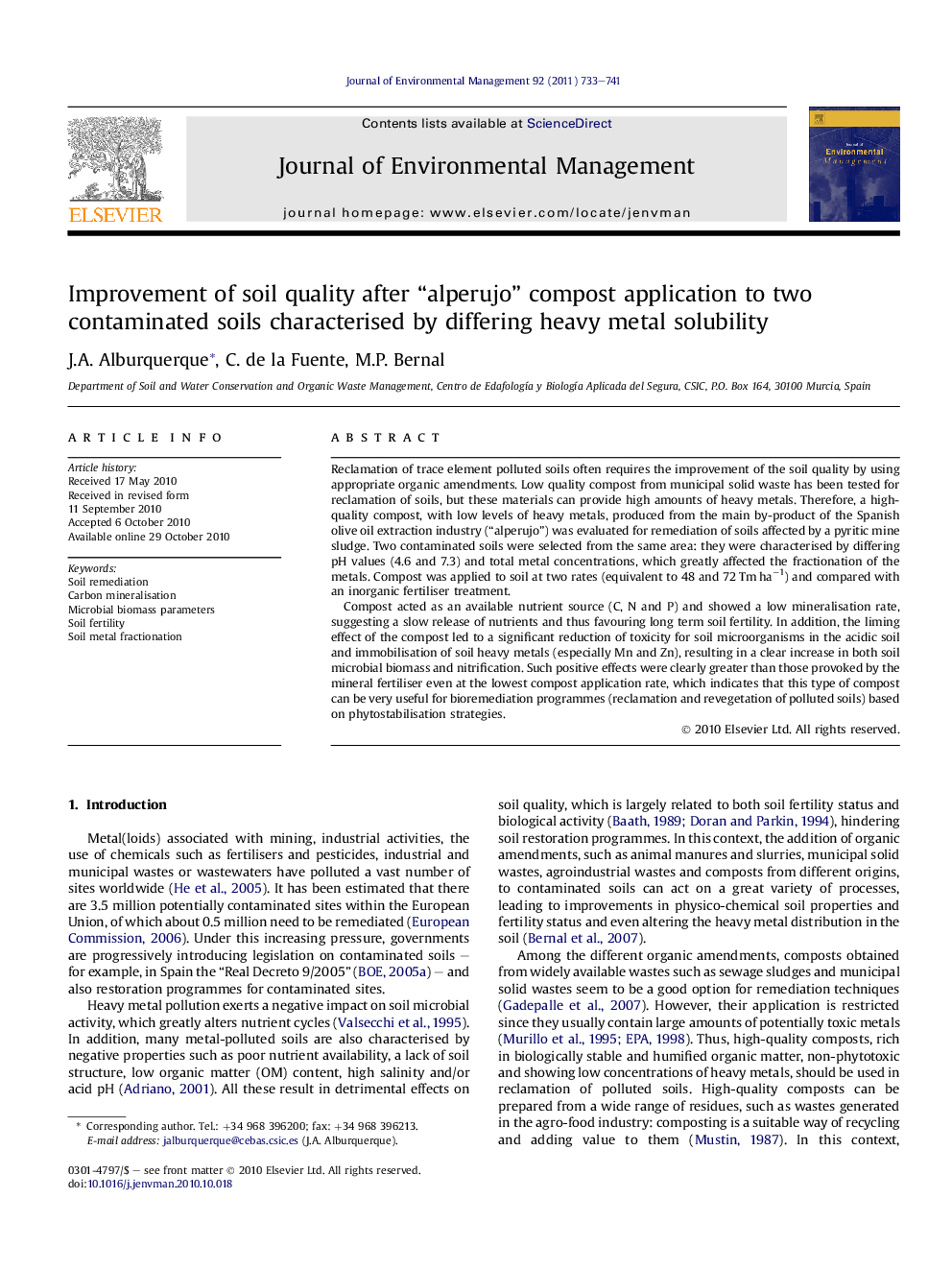| Article ID | Journal | Published Year | Pages | File Type |
|---|---|---|---|---|
| 10505535 | Journal of Environmental Management | 2011 | 9 Pages |
Abstract
Compost acted as an available nutrient source (C, N and P) and showed a low mineralisation rate, suggesting a slow release of nutrients and thus favouring long term soil fertility. In addition, the liming effect of the compost led to a significant reduction of toxicity for soil microorganisms in the acidic soil and immobilisation of soil heavy metals (especially Mn and Zn), resulting in a clear increase in both soil microbial biomass and nitrification. Such positive effects were clearly greater than those provoked by the mineral fertiliser even at the lowest compost application rate, which indicates that this type of compost can be very useful for bioremediation programmes (reclamation and revegetation of polluted soils) based on phytostabilisation strategies.
Related Topics
Physical Sciences and Engineering
Energy
Renewable Energy, Sustainability and the Environment
Authors
J.A. Alburquerque, C. de la Fuente, M.P. Bernal,
